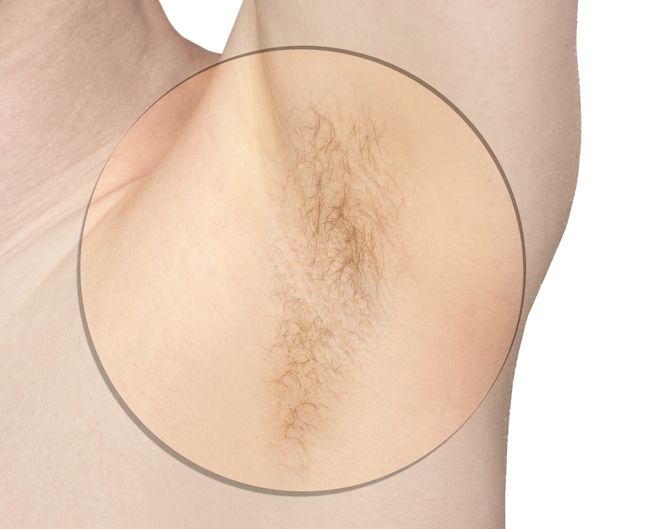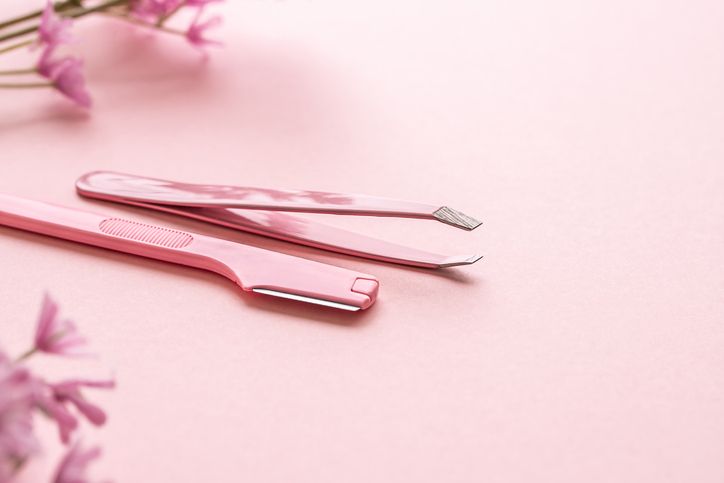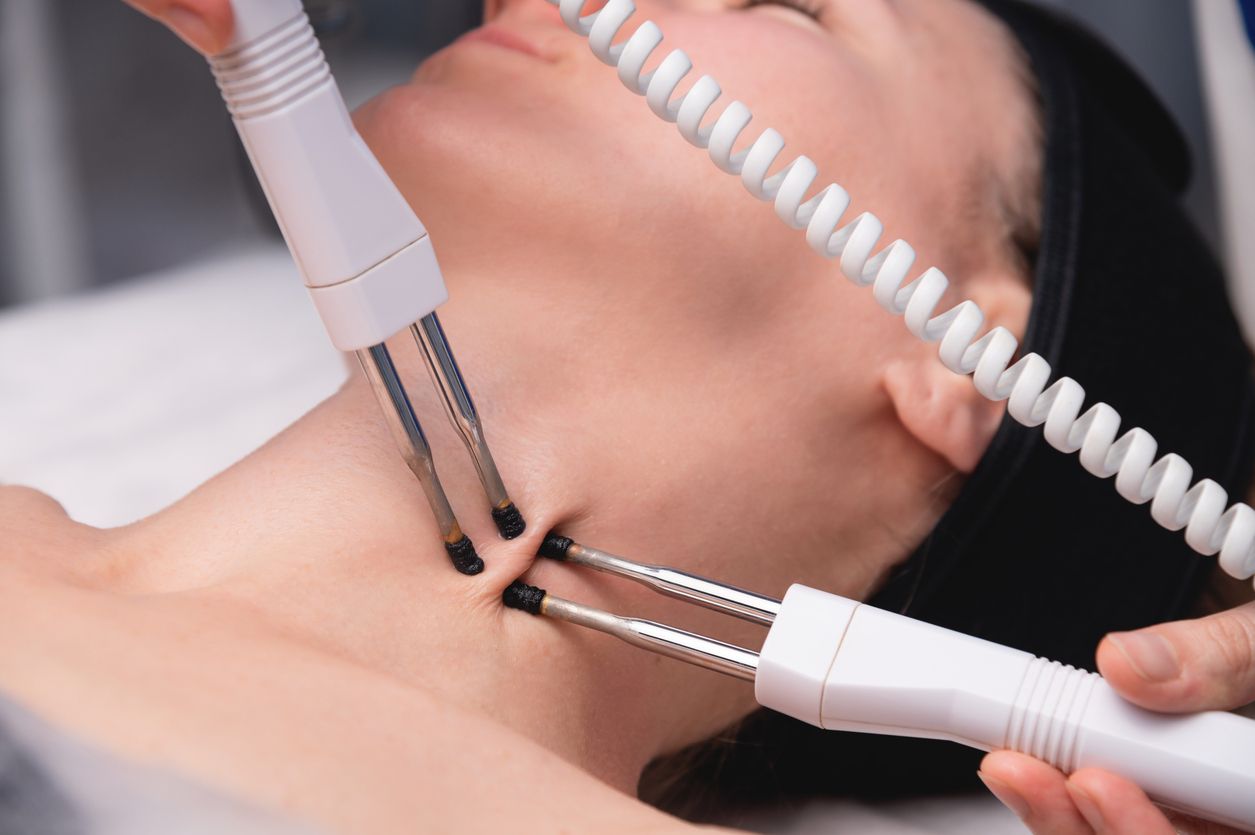- Home
- Trend
- Weight Loss Strategies
- Acne Tips
- Hair Health Information
- Blemish Removal Tips
- Acne Scar Removal Tips
- Muscle Building Techniques
- Intimate Care Tips
- Postpartum Intimate Care
- Eye Bags Wiki
- Tips for Face Slimming
- Secret of Permanent Hair Removal
- Breast Enlargement Tips
- Cure to Snoring
- Marionette Lines
- Skin-Tightening Secrets

免費體驗
A3 Laser Hair Removal Treatment
1 Minute Self-Registration
Date should not be before minimal date
Unwanted hair growth is a common concern for both men and women. Whether it's on the face, legs, underarms, or other parts of the body, dealing with excess hair can be frustrating and affect one's self-esteem. Fortunately, various hair removal methods are available to help individuals achieve smooth and hair-free skin. In this article, we will delve into the causes of unwanted hair growth and explore safe and efficient hair removal techniques to suit different preferences and skin types.
1
Who Might Have Excess Body Hair Growth? Asian or others?

Hair growth patterns, including unwanted or excessive hair growth (hirsutism), can vary among individuals of different races and ethnic backgrounds. However, it's essential to understand that there is a significant amount of variation within each racial or ethnic group, and generalisations should be avoided.
Hirsutism can affect individuals of all races and ethnicities, and it is influenced by a combination of genetic, hormonal, and environmental factors. Some research suggests that certain racial or ethnic groups may have a higher prevalence of hirsutism due to variations in hormone levels and genetics. However, these differences are not absolute, and individual variation is common.
For example, studies have shown that women of South Asian, Mediterranean, and Middle Eastern descent may have a higher likelihood of experiencing hirsutism compared to women of East Asian or Northern European descent. However, this does not mean that all individuals within these racial or ethnic groups will have the same hair growth patterns.
It's important to emphasise that hirsutism is a complex condition, and its prevalence and severity can vary widely among individuals, regardless of their racial or ethnic background. If someone is concerned about unwanted hair growth or hirsutism, they should consult a healthcare professional who can assess their specific situation and provide appropriate advice and treatment options.
2
The Causes Behind Unwanted Hair Growth

Genetics
As mentioned above, genetics play a significant role in determining an individual's susceptibility to hirsutism. If a person has a family history of hirsutism or excessive hair growth, they may be more prone to developing this condition themselves.
Hormonal imbalance
One of the primary causes of hirsutism is an imbalance of hormones in the body, particularly an excess of androgens (male hormones). Androgens are naturally present in both men and women but at different levels. When there is an overproduction of androgens or an increased sensitivity of hair follicles to these hormones, it can result in the growth of unwanted hair on the face, chest, back, abdomen, and other areas not commonly covered by fine hair in females.
Medical conditions
Certain medical conditions can lead to hirsutism due to hormonal changes. One of the most common conditions associated with hirsutism is polycystic ovary syndrome (PCOS). PCOS is a hormonal disorder that causes enlarged ovaries with small cysts and disrupts the normal balance of hormones, leading to an increase in androgen production. Other conditions, such as adrenal gland disorders, can also contribute to hirsutism.
Medications
In some cases, the use of certain medications can trigger unwanted hair growth as a side effect. Medications like steroids, which are often prescribed for various medical conditions, can cause an increase in androgen levels, leading to hirsutism. Additionally, certain hormonal treatments or therapies can have similar effects.
It's important to note that while hirsutism itself is not usually a serious medical condition, it can have significant emotional and psychological impacts on those affected. If you or someone you know is experiencing excessive or unwanted hair growth, it's essential to consult a healthcare professional who can help diagnose the underlying cause and provide appropriate treatment options.
3
What Can I Do to Stop or Slow Hair Growth?

1. Medical evaluation
If you notice a sudden increase in hair growth or if hirsutism is causing significant distress, it's essential to seek medical advice. A healthcare professional, such as an endocrinologist or a gynaecologist, can conduct a thorough evaluation to identify the underlying cause of hirsutism. They may order blood tests to measure hormone levels, assess insulin resistance, and check for any medical conditions that could be contributing to the excessive hair growth.
2. Hormonal therapy
Hormonal imbalances, such as an excess of androgens (male hormones) or an irregularity in oestrogen and progesterone levels, can be a common cause of hirsutism. In such cases, hormonal therapy may be prescribed. Oral contraceptive pills that contain oestrogen and progestin can help regulate hormone levels, leading to a reduction in unwanted hair growth. Anti-androgen medications, such as spironolactone, can also be used to block the effects of androgens and slow down hair growth. Hormonal therapy can take several months to show noticeable results, so patience is crucial.
3. Topical treatments
Some topical creams or lotions may be prescribed to help manage excessive hair growth. These products typically work by inhibiting hair follicle activity, which can lead to reduced hair growth over time. However, topical treatments may not provide significant results on their own and are often used in combination with other therapies.
4. Laser hair removal
Laser hair removal is an effective long-term solution for reducing unwanted hair growth. During this procedure, a concentrated beam of light is directed at hair follicles, damaging them and inhibiting future hair growth. Laser hair removal is more effective on individuals with darker hair and lighter skin tones. Multiple sessions, usually spaced several weeks apart, are necessary to target hair follicles in different growth phases. While laser hair removal can lead to significant hair reduction, it may take several sessions, and results may not be fully apparent within three months.
5. Electrolysis
Electrolysis is another method for permanent hair removal. During electrolysis, a fine needle is inserted into each hair follicle, and an electric current is applied to destroy the follicle, preventing further hair growth. Like laser hair removal, electrolysis requires multiple sessions over an extended period to treat all hair follicles effectively.
6. Lifestyle changes
Although lifestyle changes alone may not cure hirsutism, they can complement other treatments and contribute to overall hormonal balance. Regular exercise can help manage weight and insulin levels, which may be beneficial for certain cases of hirsutism, especially when linked to conditions like polycystic ovary syndrome (PCOS). Eating a balanced diet, managing stress, and getting sufficient sleep are also essential factors in maintaining hormone health.
7. Hair removal techniques
In the short term, various hair removal methods such as shaving, waxing, threading, or using depilatory creams can help manage unwanted hair growth. These methods provide temporary results and may need to be repeated regularly.
4
Safe and Effective Hair Removal Techniques You Can Do at Home

If unwanted hair growth is causing distress, several safe and efficient hair removal methods can help you achieve the desired results. You are probably familiar with most of them, and each DIY method that you can do at home comes with its own benefits and considerations:
1. Shaving
Shaving is one of the most common and straightforward hair removal methods. It involves using a razor to cut hair at the skin's surface, leaving the hair shaft intact. Shaving is quick, convenient, and relatively inexpensive. However, the results are temporary, and hair typically grows back within a few days. Additionally, some individuals may experience rougher regrowth as the hair is cut bluntly at the surface, which can make it appear coarser and darker.
2. Waxing
Waxing is a hair removal method that removes hair from the root, providing smoother results that last longer compared to shaving. A warm or cold wax is applied to the skin, and a cloth strip or wax strip is used to pull the hair out in the opposite direction of its growth. While waxing can be effective in removing hair from larger areas, it can be painful, especially for those with sensitive skin. Additionally, some individuals may experience skin redness, irritation, or ingrown hairs after waxing.
3. Hair removal creams
Hair removal creams, also known as depilatory creams, are chemical-based products that dissolve hair at the skin's surface. They offer a painless and quick hair removal option. Users apply the cream to the desired area, leave it on for a specific amount of time, and then wipe it off, taking the dissolved hair with it. Hair removal creams can be suitable for small areas and may be an alternative for those who want to avoid the pain of waxing or epilating. However, some people may be sensitive to the chemicals in these creams and experience skin irritation or redness.
4. Epilators
Epilators are handheld devices equipped with rotating tweezers that mechanically pluck hair from the root. They provide longer-lasting results compared to shaving, as it takes longer for hair to regrow from the root. Epilators are suitable for use on various body parts and can be a cost-effective solution in the long run, as they do not require continuous repurchasing of wax or creams. However, epilating can be uncomfortable or painful, especially for those new to the method. Some users may experience skin redness or ingrown hairs after epilating.
Before trying any DIY hair removal method at home, it's essential to consider your skin type, hair thickness, and any potential allergies or sensitivities. Patch testing any new product or method on a small area of skin can help identify possible adverse reactions. Additionally, following proper hygiene and aftercare measures can reduce the risk of skin irritation and other side effects associated with hair removal, so don't be lazy even if you just wanted to get these hairs away!

免費體驗
A3 Laser Hair Removal Treatment
1 Minute Self-Registration
Date should not be before minimal date
5
Eliminate Excess Hair Growth in 3 Months: Perfect Medical Has It Covered for You

Laser hair removal is a popular long-term solution that uses targeted laser beams to destroy hair follicles. It requires multiple sessions but can lead to significant hair reduction. Compared to those home DIY techniques, this could be the permanent way for you to bid farewell with unwanted hair. Here, Perfect Medical offers the A3 Laser Hair Removal Treatment, a non-surgical solution that uses advanced 808nm-wavelength laser energy to target melanin within hair follicles. This cutting-edge technology effectively addresses both coarse and fine body hair, providing clients with elegant and smooth skin. The treatment works by shrinking the surrounding capillaries, thereby reducing the nutrient supply to the hair follicles and hindering their ability to grow hair.
Whether you desire hair removal on your underarms, arms, legs, waistline, face, upper lip, or any other body area, Perfect Medical's A3 Laser Hair Removal Treatment is tailored to meet your needs. The procedure guarantees a painless experience, thanks to its dual cooling system, which gently soothes the skin during hair removal without the need for cold compression or cool air drying.
The 808nm-wavelength laser is specifically chosen for its effective absorption by melanin, the pigment responsible for hair colour. By targeting melanin, the laser can safely and selectively destroy hair follicles without causing harm to the surrounding skin. This precise approach ensures optimal results with minimal discomfort.
One of the key advantages of the A3 Laser Hair Removal Treatment is its ability to address a wide range of hair types, from fine to coarse. This versatility makes it an ideal choice for individuals with varying hair textures and colours. Moreover, the treatment's long-lasting effects mean that clients can enjoy smooth, hair-free skin for an extended period.
The innovative dual cooling system complements the treatment process by providing immediate relief to the skin. The cooling mechanism helps minimise any potential discomfort or redness associated with the laser energy, ensuring a comfortable and pleasant experience throughout the session. With Perfect Medical's A3 Laser Hair Removal Treatment, you can bid farewell to the inconvenience and hassle of traditional hair removal methods. Embrace a painless and effective solution that delivers elegant, hair-free skin for the long term!

免費體驗
A3 Laser Hair Removal Treatment
1 Minute Self-Registration
Date should not be before minimal date
FAQ

1. Can hair removal methods cause ingrown hairs?
A: Yes, some hair removal methods can cause ingrown hairs. Ingrown hairs occur when a hair follicle becomes trapped or curls back into the skin instead of growing out. Shaving and waxing are common culprits for ingrown hairs, especially in areas with coarse or curly hair. When hair is cut or removed at the surface level, it can sometimes regrow and get trapped under the skin, leading to red, inflamed bumps. Regular exfoliation can be helpful in preventing ingrown hairs. Exfoliating the skin gently helps remove dead skin cells and clears the way for hairs to grow out properly, reducing the likelihood of ingrown hairs.
2. Is hirsutism in women more common?
A: The prevalence of hirsutism in women varies. Hirsutism is the presence of excessive or unwanted hair growth in women, typically in areas where men typically have hair. It is relatively common but can be influenced by various factors, including genetics, hormonal imbalances, and underlying medical conditions. Conditions like polycystic ovary syndrome (PCOS) are often associated with hirsutism. However, it's important to note that hirsutism can affect women of all races and ethnicities, and individual variation is significant. It is advisable for women experiencing hirsutism to consult a healthcare professional for proper evaluation and management.
3. Is laser hair removal permanent? Can it remove dark hair as well?
A: Laser hair removal can lead to long-term hair reduction, but it may not guarantee permanent hair removal for everyone. The procedure uses laser technology to target hair follicles, damaging them and inhibiting future hair growth. While many individuals experience a significant reduction in hair growth after completing a series of laser sessions, some may notice hair regrowth over time, although often finer and lighter. The effectiveness of laser hair removal can vary based on factors like skin colour, hair colour, and the specific area being treated. Laser hair removal is generally more effective for individuals with darker hair and lighter skin tones.
4. Can I undergo hair removal while pregnant?
A: It is generally advised to avoid laser hair removal and other hair removal treatments during pregnancy due to potential risks and hormonal changes. While there is limited research on the safety of laser hair removal during pregnancy, it is better to err on the side of caution. Hormonal fluctuations during pregnancy can impact hair growth patterns, and some women may experience temporary increases in hair growth, particularly on the face. It's advisable to consult a healthcare professional for personalised advice regarding hair removal during pregnancy.
5. What is the relationship between birth control pills and excessive hair growth?
A: Birth control pills, also known as oral contraceptives, contain hormones (oestrogen and progestin) that help regulate the menstrual cycle and prevent pregnancy. In some cases, they can also help manage hirsutism or excessive hair growth in women. Certain birth control pills can lower androgen levels (male hormones) in the body, which can contribute to hirsutism. By regulating hormone levels, birth control pills may help reduce unwanted hair growth. However, the effectiveness can vary depending on the underlying cause of hirsutism, and not all women may experience the same degree of improvement. It's essential to consult a healthcare professional for proper evaluation and to determine the most appropriate treatment for managing hirsutism.








